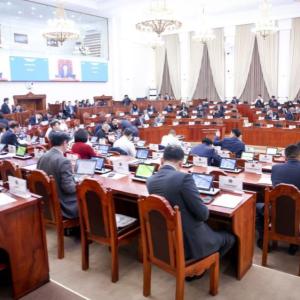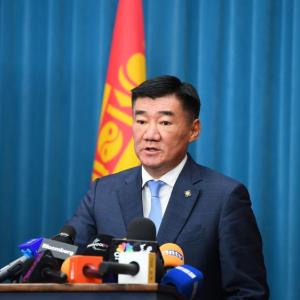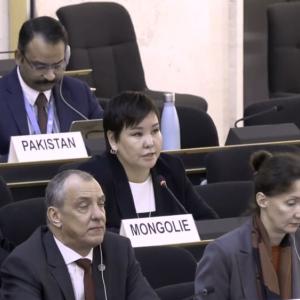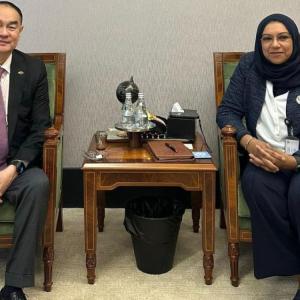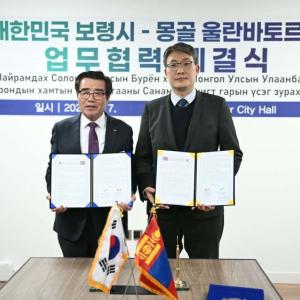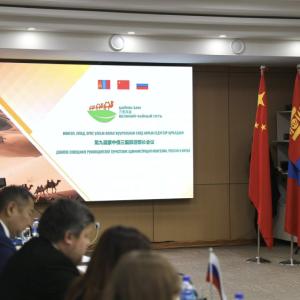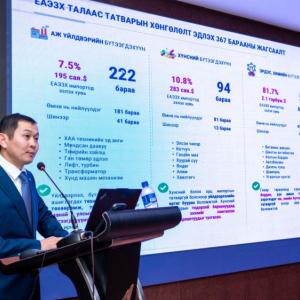“Emergency obstetric and neonatal care” conference runs
PoliticsUlaanbaatar /MONTSAME/ The Office of Chairman of the State Great Khural (parliament) in collaboration with the United Nations Population Fund /UNFPA/ in Mongolia organized on Friday the “Emergency obstetric and neonatal care” national conference in the State House.
This high level consultation meeting is aimed to strengthen quality and coverage of the maternal and child health initiatives including emergency obstetric care services. The participants were representatives of Ministry of Health and Sports, Mongolian National University of Medical Sciences, City Department of Health, National Center for Maternal and Child Health, as well as Health Centers from 9 districts of Ulaanbaatar and of Arkhangai, Uvurkhangai, Tuv, Selenge, Bulgan, Orkhon, Darkhan-Uul, Omnogovi, Dundgovi and Bayankhongor aimags .
The opening remarks were delivered by Speaker of the Parliament. Mr. Z.Enkhbold who highlighted, “In the scope of implementation of Millennium Development Goals, Mongolia has been sustainably implementing projects to improve maternal health and reduce child mortality. According to statistics, 40,000 live births were counted in 2000 and, after 14 years, the number of newborns was increased two-fold. The total population of Mongolia reached 3 million in 2015.
Parliament adopted the MDGs as development benchmarks in 2005 and then--as the framework for the MDG-Based Comprehensive National Development Strategy (CNDS) of 2008-21. Mongolia recorded a decline in under-five mortality rate from 97.2 deaths per 1,000 live births in 1990 to 18.9-- in 2012. In terms of the actual number of infant deaths, there has been remarkable 76.1 percent decline from 4,789 deaths in 1990 to 1,143 in 2012.
The maternal mortality rate (MMR) peaked in 1993 at 259 per 100,000 live births before declining to 143.5 in 1997. It has gone down steadily since then, despite a slight fluctuation between 1997 and 2000, an accelerated decline in 2001-06, and,again, a slight decrease in 2007-10.
The maternal mortality rate (MMR) was high in the early 1990s after which it decreased in 2001-06 due to introduction and implementation of Maternal Mortality Reduction Strategies (MMRS) between 2001 and 2010. The Government has formulated and implemented the national program on “Maternal and Child Health for 2011-15“. It has contributed significantly to achieving the MMR target by 2015 as outlined in MDG 5”.
At the National Conference, a keynote speech was also delivered by Ms Tania Patriota, UNFPA in Mongolia representative.

UNFPA Mongolia Representative T.Patriota noted, “Exactly a month ago, on behalf of the world’s more than 7 billion people, Heads of State and Government Representatives adopted a historic decision on a comprehensive, far-reaching and people-centered set of universal and transformative Goals and targets for the next 15 years”.
During this gathering, the UN Secretary-General Ban Ki Moon launched the “Global Strategy for Women’s, Children’s, and Adolescents’ Health 2030”, calling all countries to further improve the health of hundreds of millions of women and children around the world, and in so doing, to improve the lives of all people for the next 15 years".
Like Mongolia, many upper-middle-income countries are now looking for the efficient use of domestic resources, and in particular, many health and population development Ministries are now focusing on strengthening their allocation systems to make them mother-and child -friendly; creating budget lines specifically on maternal and child health; including essential health services in the health insurance packages, and strengthening reporting and tracking mechanisms”.
“We all know that there is no one-size fits -all solution. Ensuring sustainable financing for maternal and child health programmes requires longstanding commitment and action. Therefore, UNFPA stands ready to provide guidance to support the Mongolian Government towards this result," she concluded.
 Ulaanbaatar
Ulaanbaatar





















